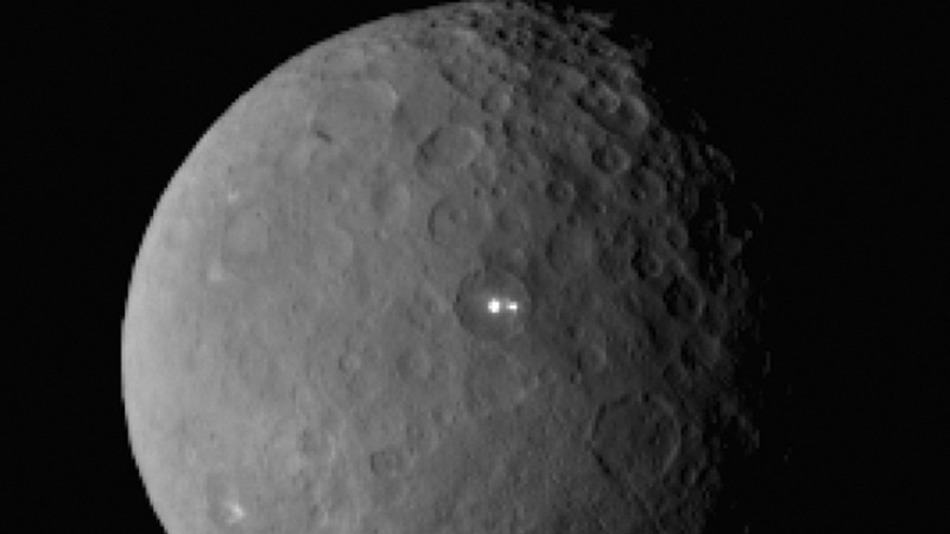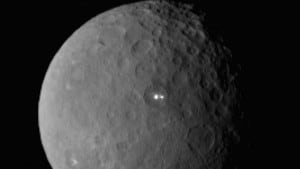
 Dwarf planet Ceres reveals some of its well-kept secrets in a study published in the journal Nature, thanks to new data from NASA’s Dawn spacecraft. They include highly anticipated insights about mysterious bright features found all over the dwarf planet’s surface and especially in the crater Occator.
Dwarf planet Ceres reveals some of its well-kept secrets in a study published in the journal Nature, thanks to new data from NASA’s Dawn spacecraft. They include highly anticipated insights about mysterious bright features found all over the dwarf planet’s surface and especially in the crater Occator.
Ceres has more than 130 bright areas, and most of them are associated with impact craters. Study authors, led by Andreas Nathues at Max Planck Institute for Solar System Research, Göttingen, Germany, write that the bright material is consistent with a type of magnesium sulfate called hexahydrite. A different type of magnesium sulfate is familiar on Earth as Epsom salt.
Nathues and colleagues, using images from Dawn’s framing camera, suggest that these salt-rich areas were left behind when water-ice sublimated in the past. Impacts from asteroids would have unearthed the mixture of ice and salt.
“The global nature of Ceres’ bright spots suggests that this world has a subsurface layer that contains briny water-ice,” Nathues said.
The surface of Ceres, whose average diameter is 584 miles, is generally dark—similar in brightness to fresh asphalt. The bright patches that pepper the surface represent a large range of brightness, with the brightest areas reflecting about 50 percent of sunlight shining on the area. But there has not been unambiguous detection of water ice on Ceres; higher-resolution data are needed to settle this question.
The inner portion of the crater called Occator contains the brightest material on Ceres. Occator itself is 60 miles in diameter, and its central pit, covered by this bright material, measures about 6 miles wide and 0.3 mile deep. Dark streaks, possibly fractures, traverse the pit. Remnants of a central peak, which was up to 0.3 mile high, can also be seen.
With its sharp rim and walls, and abundant terraces and landslide deposits, Occator appears to be among the youngest features on Ceres. Dawn mission scientists estimate its age to be about 78 million years old.
Study authors write that some views of Occator appear to show a diffuse haze near the surface that fills the floor of the crater. This may be associated with the observations of water vapor at Ceres that were reported by the Herschel space observatory in 2014. The haze seems to be present in views taken at noon local time and absent at dawn and dusk. This suggests that the phenomenon resembles the activity at the surface of a comet, with water vapor lifting tiny particles of dust and residual ice. Future data and analysis may test this hypothesis and reveal clues about the process causing this activity.
Daytime surface temperatures on Ceres span from minus 136 degrees to minus 28 degrees Fahrenheit. The maximum temperatures were measured in the equatorial region. The temperatures at and near the equator are generally too high to support ice at the surface for a long time, but data from Dawn’s next orbit will reveal more details.
As of this week, Dawn has reached its final orbital altitude at Ceres, about 240 miles from the surface of the dwarf planet. In mid-December, Dawn will begin taking observations from this orbit—including images at a resolution of 120 feet per pixel; infrared, gamma ray and neutron spectra; and high-resolution gravity data.


Be the first to comment